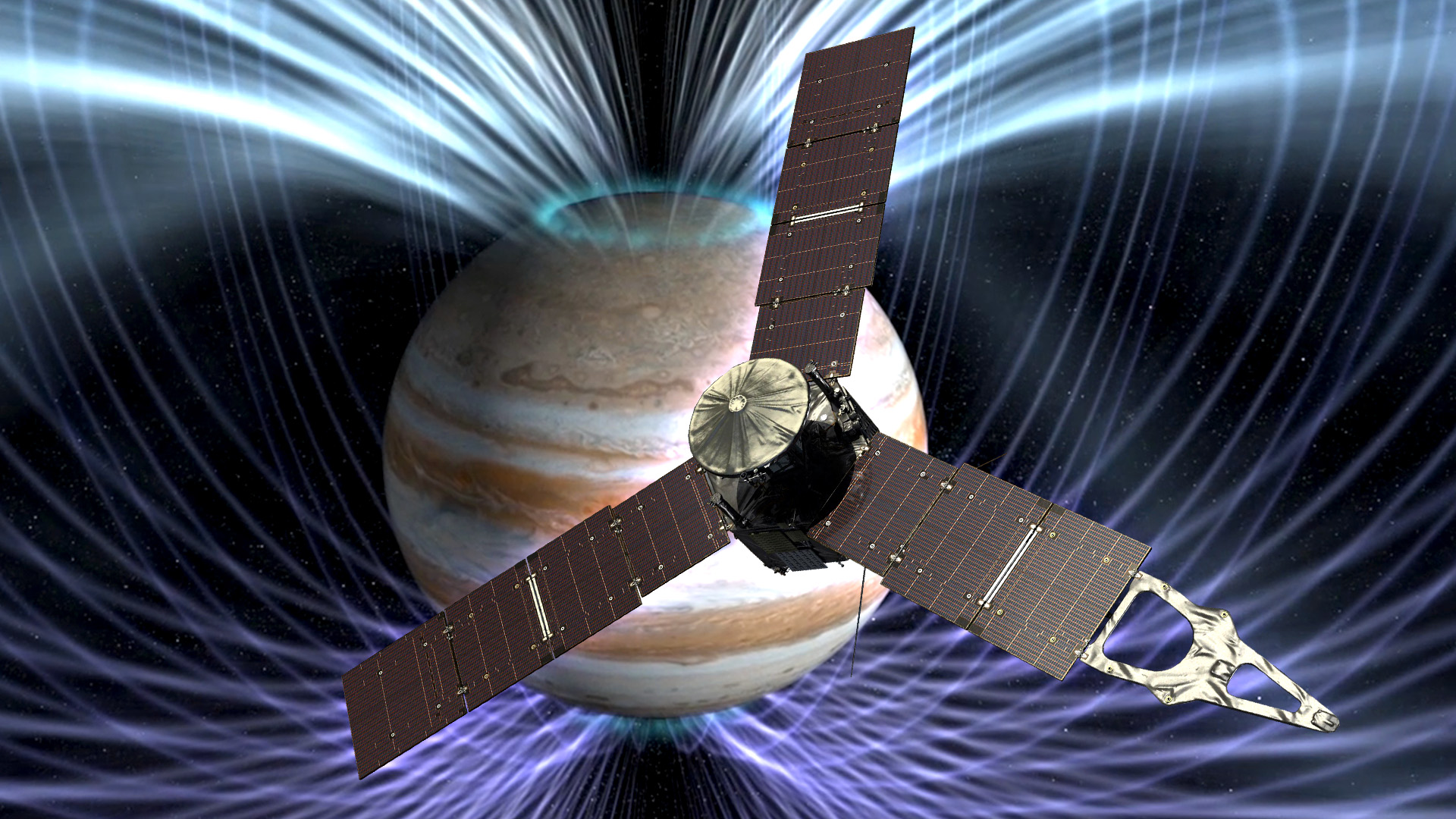Exploring Jupiter’s Magnetism

NASA’s Juno spacecraft will create a detailed map of Jupiter’s magnetic field.
After a five-year journey, NASA's Juno spacecraft will make its long-anticipated arrival at Jupiter on July 4, 2016. Coming face to face with the gas giant, Juno will begin to unravel some of the greatest mysteries surrounding our solar system's largest planet, including the origin of its massive magnetosphere. A magnetosphere is the sphere of influence of a planet's magnetic field. As a planet rotates, the swirling motion of electrically conducting fluid deep in its interior drives electric currents, inducing a magnetic field. A pair of sensors aboard Juno will allow scientists to look inside Jupiter and map the structure of its magnetic field with high accuracy and observe variations in the field over time. The measurements will give scientists a better understanding about how Jupiter's magnetic field is generated. Watch the video to learn more.
In this video, NASA scientist Jack Connerney talks about the Juno mission and its study of Jupiter's magnetic environment.

Jupiter's magnetic field, shown above in an artist's concept, is the largest of all the planets in our solar system.

Jupiter's magnetic field extends up to nearly 2 million miles from the planet. Its influence likely reaches beyond the orbit of Saturn.

Measurements by Juno will provide scientists with the first look at Jupiter's magnetic field deep below the surface where it’s generated.
For More Information
See NASA.gov
Credits
Please give credit for this item to:
NASA's Goddard Space Flight Center
Images courtesy of NASA/JPL/SwRI
-
Writer
- Sarah Schlieder (NASA/GSFC)
-
Producer
- Dan Gallagher (USRA)
-
Video editor
- Dan Gallagher (USRA)
-
Videographers
- John Caldwell (Advocates in Manpower Management, Inc.)
- Rob Andreoli (Advocates in Manpower Management, Inc.)
-
Scientist
- John Connerney (NASA/GSFC)
-
Interviewee
- John Connerney (NASA/GSFC)
-
Project support
- Elizabeth Zubritsky (ADNET Systems, Inc.)
-
Animators
- Walt Feimer (HTSI)
- Lisa Poje (USRA)
Release date
This page was originally published on Thursday, June 30, 2016.
This page was last updated on Wednesday, May 3, 2023 at 1:48 PM EDT.
